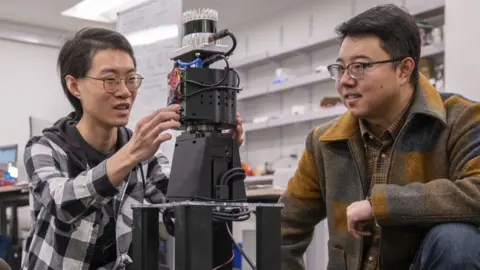
If you want to find out if your robot can see through smoke, you'll need some smoke.
A University of Pennsylvania student was surprised when they set up a late-night experiment to test such a robot.
Shortly after turning on the smoke machine, a loud fire alarm went off.
"The whole building was triggered," says Mingmin Zhao of the University of Pennsylvania, smiling. "My student called me. He was very surprised."
The incident was a minor setback for the team developing a robot with an innovative radio-based sensing system.
Radio waves could allow robots or autonomous vehicles to see through thick smoke, heavy rain, or even around corners. These waves can even detect hidden weapons.
However, using radio waves to create visual images is an unusual method for robots and autonomous vehicles. More common in these fields are regular optical cameras, light detection and ranging (Lidar), and other sensors.
However, Prof. Zhao and his students have developed a potentially powerful method for robots to see using radio waves.
Radar, which uses radio waves, has been used for decades to track aircraft, ships, and weather. But Prof. Zhao's robot uses a spinning array that sends radio waves in all directions.
An onboard artificial intelligence (AI) system then creates a 3D view of the environment using this information.
"What we are trying to do is help robots gain superhuman vision—to see in situations where human eyes or traditional visual sensors cannot," explains Prof. Zhao.
He suggests that this technology could enable a future search-and-rescue robot to save people from a burning building.
In later tests, the robot was surrounded by a clear plastic box filled with smoke to avoid setting off any nearby fire alarms.
